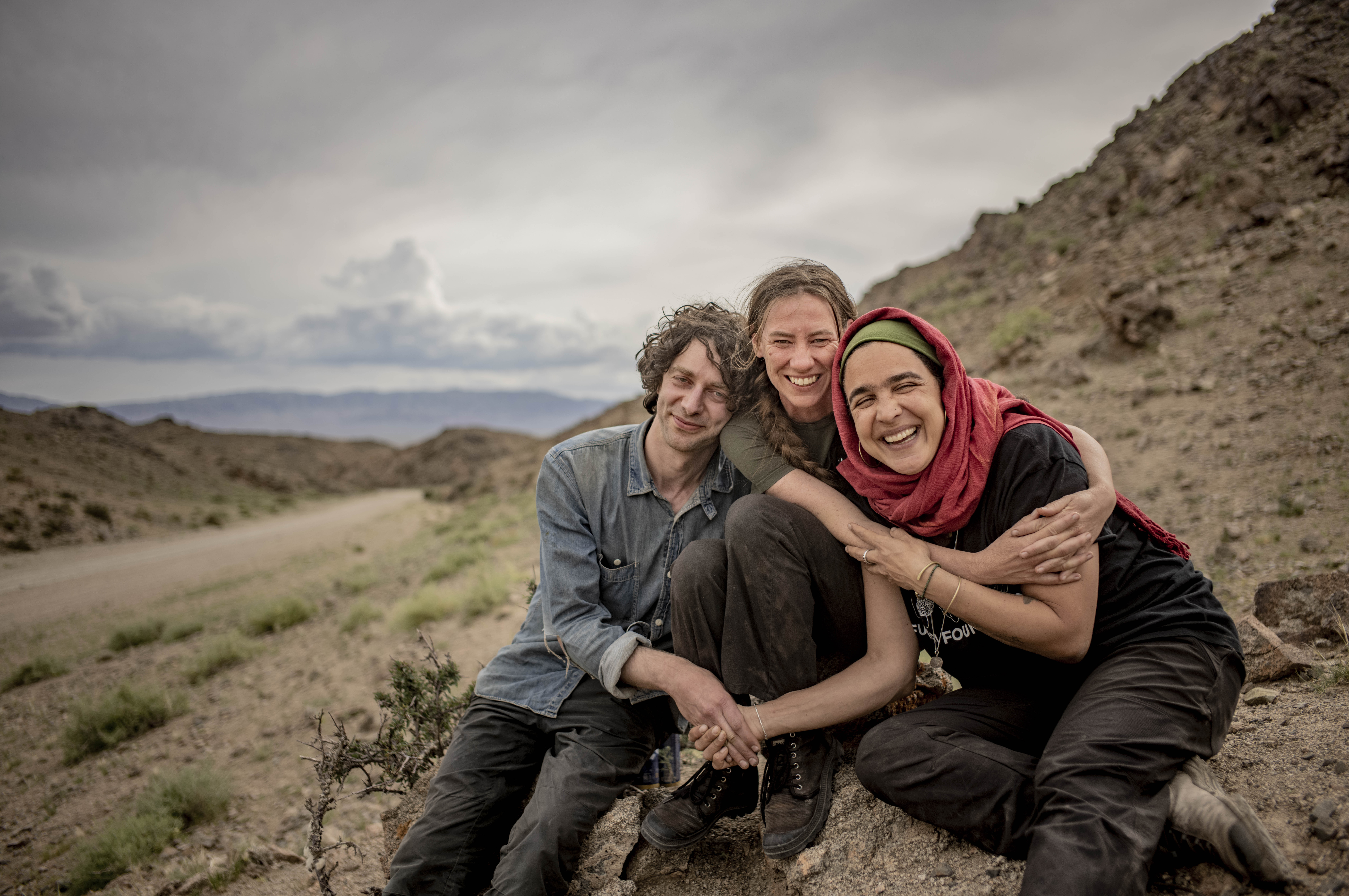Biography
Giuliana Furci discovered her calling in the most unlikely place. Born in London to a Chilean refugee mother who had been a political prisoner after the 1973 coup and an Italian father from the countryside, Giuliana’s early life was filled with stories of migration and injustice. “Everything about their beginnings influenced the thirst for justice and equality that I have poured into my work for the fungi,” she reflects. After studying aquaculture in Chile, Giuliana found herself drawn to the neglected fungi kingdom, eventually describing herself as working “for” the fungi as the focus of her professional life’s mission.
In 2012, Giuliana founded the Fungi Foundation, the first nonprofit in the world fully dedicated to fungi conservation. The following year, she achieved a historic breakthrough: successfully advocating for Chile to become the first country in the world to include fungi in its environmental law and to require its inclusion in environmental impact assessments. She co-coined the term “funga” to describe the diversity of fungi of a determined place or time, and elevating them to be named alongside flora and fauna through the 3F Proposal and the Fungal Conservation Pledge.
Despite being largely self-taught rather than following a traditional scientific path, Giuliana has become one of the most recognized and influential figures in mycology, winning the National Geographic Conservation Leadership Award in 2022, the first mycologist to receive this honor.
Merlin Sheldrake has always been fascinated by transformation. “A solid log becomes soil, sugar becomes alcohol, a lump of dough rises into bread—but how?” he wondered as a child. His questioning consistently led him back to fungi, the metabolic wizards with a breathtaking capacity to arrange and rearrange the world. After earning his PhD in Tropical Ecology and Mycology from Cambridge, Merlin helped bring fungi into the public consciousness with his book “Entangled Life: How Fungi Make Our Worlds, Change Our Minds, and Shape Our Futures”—a million copy bestseller and winner of the Royal Society Science Book Prize and has been translated into 32 languages.
Merlin’s rare gift lies in making complex scientific concepts accessible and compelling to everyone. His flair for public speaking and wealth of innovative ideas have made him a public figure beloved by many, yet he remains deeply committed to scientific research and connecting science to real-world change. With Giuliana, he launched the Fauna Flora Funga Initiative, successfully advocating for fungi inclusion in conservation frameworks across more than 20 countries. He is the Director of Impact at SPUN and the UK Policy Lead at the Fungi Foundation. He also works closely with Toby Kiers at the VU in Amsterdam.
Toby Kiers has spent her career captivated by the hidden world beneath the surface. “The underground has always held secrets for me,” she explains. “There were unexplored galaxies just below.”
Starting her work on mycorrhizal fungi at age 19 in the tropical forests of Panama, Toby was the youngest scientist on the island. Across her career, she has developed an innovative approach that combines evolutionary biology, ecology, and biophysics to understand how carbon and nutrients flow through underground fungal networks. She uses a dynamic combination of robotics, imaging, and global data sets to demonstrate how symbiotic fungi build vast networks that help regulate the Earth’s climate and nutrient cycles. Her groundbreaking research has earned her global recognition, including the prestigious NWO Spinoza Prize. As a University Research Chair and Professor at Vrije Universiteit Amsterdam, Toby’s lab has produced landmark discoveries about the relationship between mycorrhizal fungi and carbon flows. She co-founded the Society for the Protection of Underground Networks (SPUN) to create a global network of researchers mapping mycorrhizal biodiversity and protecting critical fungal networks.
The three discovered each other through their shared passion for fungi and quickly realized they possessed complementary superpowers. Toby’s cutting-edge research provides the scientific foundation, Merlin’s communication genius translates complex concepts for global audiences, and Giuliana’s advocacy expertise drives policy change. United by the understanding that fungi hold keys to climate solutions that the world has barely begun to recognize, this unprecedented team is ready to write the next chapter in that narrative.
Breakthrough Program
Giuliana Furci, Merlin Sheldrake, and Toby Kiers were selected as a team for the Climate Breakthrough Award program in 2025.
They have identified a massive blind spot in the climate movement: fungi. Despite their critical role in carbon sequestration, fungi have been largely overlooked in climate strategies and conservation agendas. The numbers are staggering. Through the ancient relationship between plants and fungi, fungal networks draw down approximately 13 billion tons of CO2 per year into the soil. Underground ecosystems store 75% of all terrestrial carbon. Yet 90% of mycorrhizal fungal biodiversity hotspots remain unprotected, facing threats from deforestation, erosion, mining, pollution, and harmful agricultural practices.
They believe fungal biodiversity is key to mitigating climate change and adapting to the consequences of climate breakdown. Through the program, they want to launch a groundbreaking strategy with the goal of laying the legal, regulatory, and scientific groundwork required to write fungi into global climate and conservation agendas.
Conservative estimates suggest extraordinary potential: restoring fungal communities in 45% of key areas worldwide would pull half a billion tons of CO2 from the atmosphere annually. Protecting just 20% of currently unprotected fungal hotspots would preserve another half billion tons of annual carbon storage. Underground ecosystems with the richest fungal diversity tend to store more carbon, creating double benefits from protection efforts.
If successful, their work has the potential to fundamentally transform how the world approaches natural climate solutions by protecting fungal communities and making it possible to leverage the power of fungi to mitigate climate change and support global diversity.
As they put it: “Facing the challenges of climate and biodiversity crises within a legislative paradigm that excludes fungi is like trying to solve a jigsaw puzzle with several missing pieces. We are working to put these missing pieces onto the puzzle board.”


